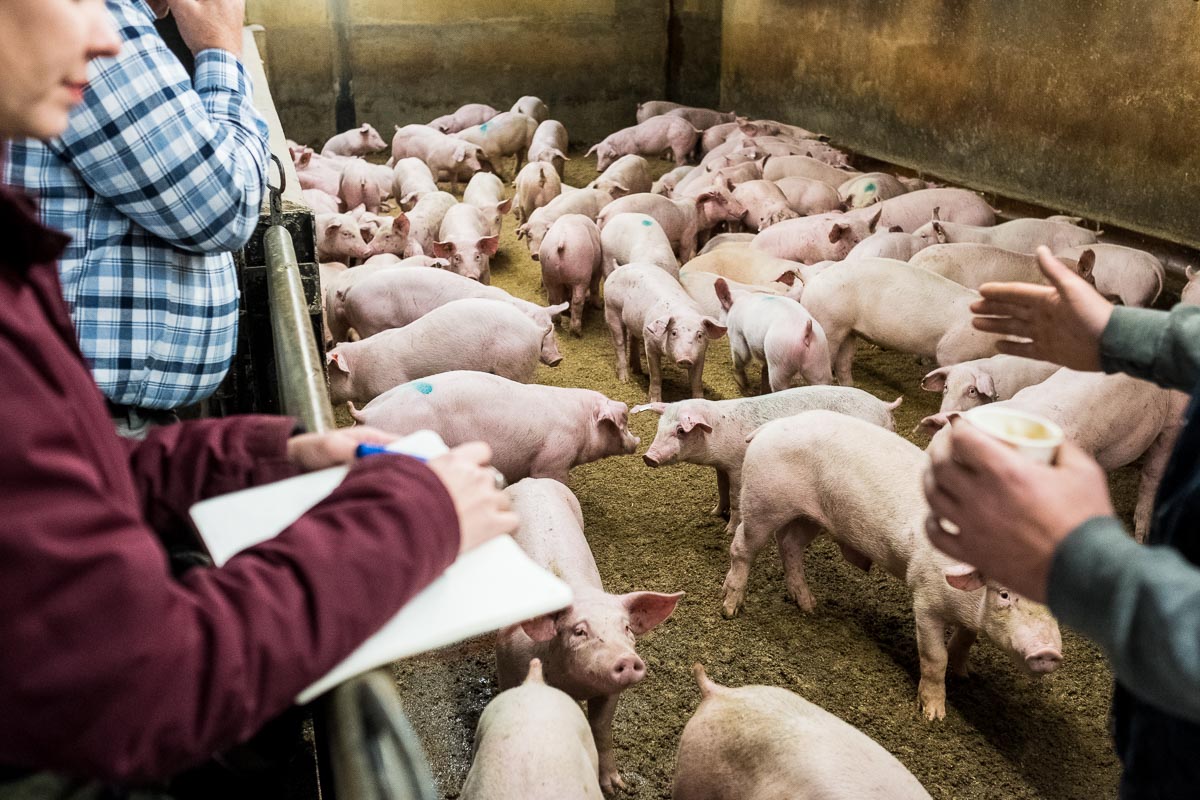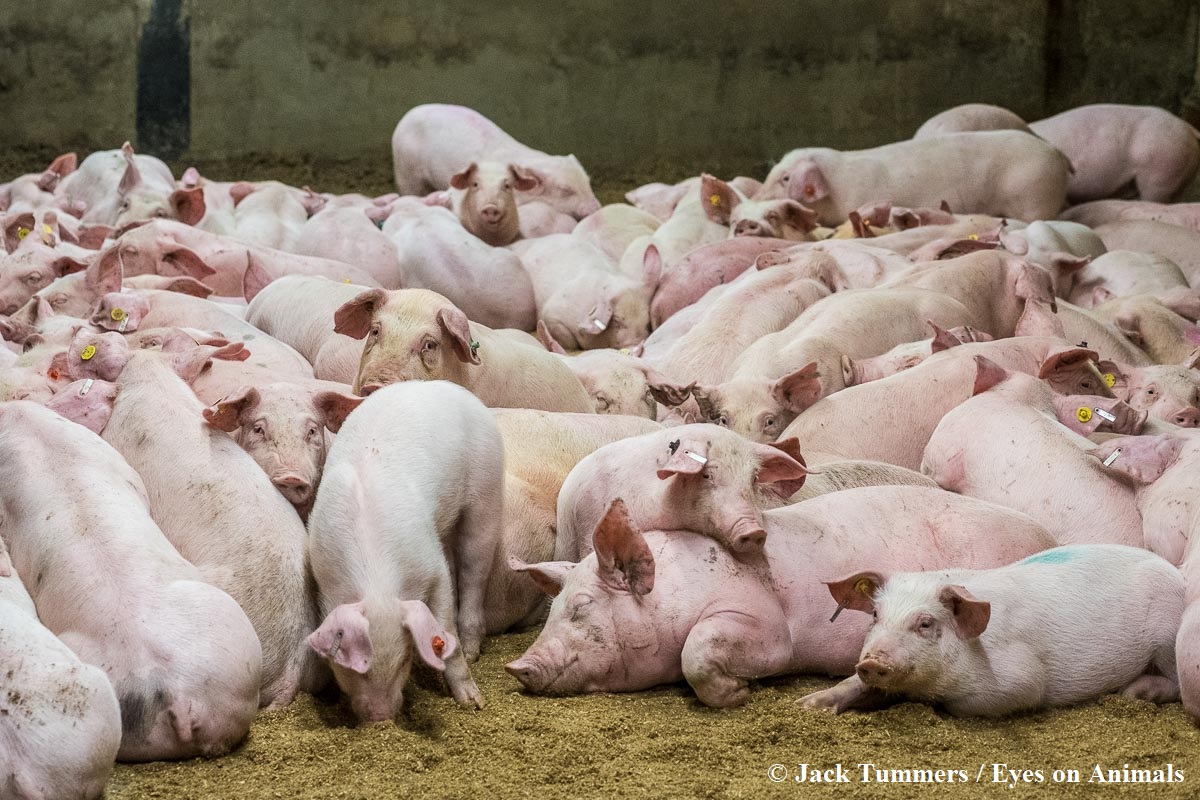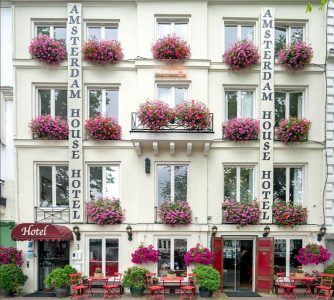Tonight Eyes on Animals received a call from the owner of a Dutch pig export assembly centre. He was stuck with a big delivery of piglets. The owner told us the pigs were due to be exported to a German slaughterhouse, but the official governmental veterinarians (from the NVWA) left without signing the export certificate, resulting in the piglets having to remain at his collection centre until an alternate domestic slaughterhouse could be found. The owner asked us to come by and give our opinion about the condition of the animals.
When we arrived, there were 400 to 500 ‘culled’ piglets. These are piglets that farmers do not want to keep for further fattening because they are runts or have some physical abnormality. Instead they sell them off at a young age to go to slaughter. We mainly saw piglets with umbilical hernias. A number of the piglets had considerably large hernias (>15cm). Some piglets were coughing or stood with arched backs (indicator of some pain) or had abscesses. Several piglets were sleeping during our visit – so it was difficult to examine their condition. The provisions for the piglets were otherwise in order; there was enough space, sawdust, food and water. Some piglets were huddled, indicating that the temperature was a bit too low. However, we did not have a case of serious violations or concerns and thus saw no reason to get involved in this conflict.
A few weeks later however the owner informed us that a number of the piglets – due to the lack of slaughter capacity in Dutch slaughterhouses – were forced to stay at the assembly centre for several days. 50 of those piglets died, 10 of which were killed using a captive bolt gun. We are shocked by this high mortality rate and question how this could have happened. The owner believes the cold was a factor, as they are not able to control the temperature in the pens the way they can in a pig barn, plus the pre-existing health issues amongst the pigs. He also mentioned that the NWVA did visit the assembly centre during this waiting period but did not make any further remarks.
We have therefore asked the NVWA to share their side of the story with us. Why did they leave the assembly centre that evening? How did they judge the condition of the pigs? And what, according to them, is the reason for the high mortality rates? We can imagine that they had critical remarks about the condition of the pigs and think it is positive that they are strict and act with enforcement where necessary. But although the assembly centre has the ultimate responsibility to make sure only healthy animals arrive and to take good care of them to prevent mortalities, the NVWA could have possibly better anticipated the consequences of their departure.
The NVWA did take time to briefly answer our questions, but they were not allowed to give any specific details regarding this case. However, they say that there are 2 sides to the story, and their side is not the same as the story the pig assembly owner told us. As well, it was a case of unacceptable behaviour whereby the NVWA could not get their work done properly at the premise. They also informed us that “the owner of the assembly center and the transporter are to only accept piglets that are healthy and fit for transport. The owner is also responsible for taking good care of the piglets as long as they are on his property. The NVWA however does inspect if these legal requirements are met and act accordingly when they are not.”
We can only assume that the Dutch authorities are looking closely at this incident and taking care of things correctly, and that we will never know what exactly happened.



